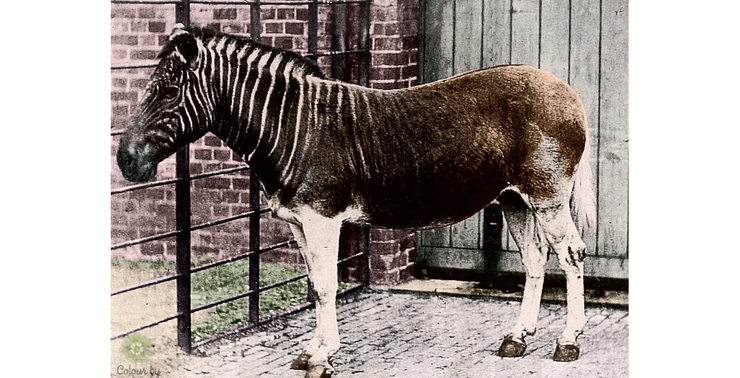Horses, Zebras, Quaggas
In my quest to make the Southlands as new and interesting as possible, I thought of including domesticated zebras instead of horses. However, I knew that there were problems in real life with that, not least of which is that it's been tried before: during the gold rush to Pilgrim's Rest in South Africa, there was a time when there were stagecoaches being pulled by teams of zebras. I've seen faded Victorian Daguerrotypes of them, but there don't seem to be any online, unfortunately. The reason why they went to such lengths was, zebras are immune to Sleeping Sickness, caused by parasites passed by bites from the tsetse fly. The disease affects humans and domestic livestock, but the local wildlife just laughs it off!
Research in later years found that the tsetse fly breeds in some species large trees. Over time, the trees grow, the tsetse fly flourishes, elephants are attracted to the trees, then they eat so much foliage that the tree cover decreases. As the tree cover decreases, the tsetse flies disappear, and the land becomes safe for humans and their livestock again; then, because they've exhausted the tree fodder in that district, the elephants no longer feed there (grass is a poor substitute for leaves). With no elephants, the trees grow back, and the cycle begins again. However, this only affects the hotter, wetter parts of South Africa, so most of the land is safe for domestic livestock. Pilgrim's Rest, which is in the biome where tsetse fly is common, is not. The town is within the Barberton Mountain Land, which was the inspiration for the Greenstone Country.
So, that's the background to the problem of horses in the hotter parts of Africa. There weren't any horses, because flies. The problems with domesticating zebras have been very well documented by CGP Grey, who put together a very nice vid here. (vid down below)
Which illustrates the problem very nicely.
So zebras were out. However, there was another equine in South Africa until about 120 years ago, the Quagga:

These were a subspecies of Plains Zebra, going by genetics, and they've been trying to re-create it by selective breeding since the 1980s. The last I heard, they had managed to breed zebras with white legs and hindquarters, but the brown coat on the rest of the animal hasn't re-appeared. Maybe evolution isn't only genetics, after all.
If, I thought, there were a people using quaggas for draft for thousands of years, they may have had enough time to make them bigger and more biddable than their wild relatives. After all, it did take that long to get horses big enough for humans to ride. Warfare in the ancient world was dominated by chariots, not horses, because they weren't yet big enough to carry armoured riders.
So, I had my elves use quaggas as horses. It could happen, right? Assuming quaggas had similar herd hierarchy to horses, which is a big assumption.





